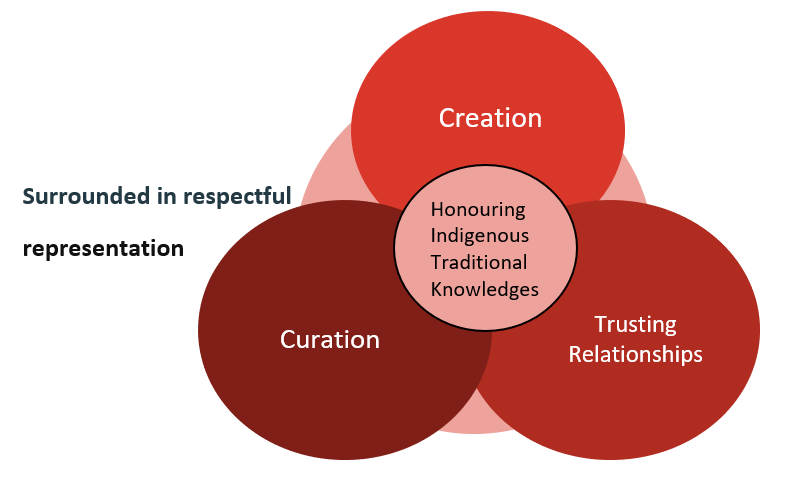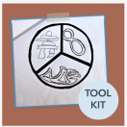Module 3: Creation and Curation
Module 3 Summary and Reflection

Working with Indigenous Peoples to curate and create Indigenous course content benefits all of us.
Path of creation and curation summary
Community Engaged Learning at the University of Manitoba has developed a pathway that identifies five steps of Indigenous Community Engagement:
- The work before the work.
- Forming the partnership.
- Maintaining the partnership.
- Closing the partnership.
- The relationship after the work.
Explore each part of the pathway in more detail here: A Pathway for Indigenous Community Engagement [PDF].
Self-Assessment #1
 To avoid misappropriation, it is important to critically reflect on why you are turning to Indigenous cultural heritage for your inspiration. Examining your process for creating and curating content allows you to look at how we can be mindful of other ways of knowing and being in the world.
To avoid misappropriation, it is important to critically reflect on why you are turning to Indigenous cultural heritage for your inspiration. Examining your process for creating and curating content allows you to look at how we can be mindful of other ways of knowing and being in the world.
How can you contribute to the ethical treatment of Indigenous Traditional Knowledges so as not to misappropriate?
How can you support Indigenous Traditional Knowledges on your reconciliation journey and prevent further misappropriation?
Record your responses in your Toolkit.
Moving forward
- Assess your current knowledge and the role of your own culture in shaping your knowledge.
- Evaluate information and conduct a self-analysis to assist in identifying gaps in knowledge and understanding your biases and assumptions.
- Begin to brainstorm resources and pathways to assist in addressing knowledge gaps, reframing current knowledge, and developing opportunities for connecting with Indigenous cultures and transforming your perspective.
Summary
In this module, you have gained an understanding about creating or curating accessible digital materials that are specific to different Indigenous audiences and platforms while following Indigenous protocols.
We have provided you with tools and information to help you avoid cultural misappropriation. You now have a basis to help you create and curate respectfully in your Indigenous digital literacy work.
Learner notes
Sources and recommended readings:
Indigenous cultural appropriation: The Appropriation of Aboriginal Cultural Heritage: Examining the Uses and Pitfalls of the Canadian Intellectual Property Regime | Intellectual Property Issues in Cultural Heritage (sfu.ca)
Writing Guide for Indigenous Content – Province of British Columbia (gov.bc.ca)
Creating content for or about Indigenous Peoples – Province of British Columbia (gov.bc.ca)
Attributions
- “Creation and Curation” image by is licensed under a CC BY 4.0 licence.

